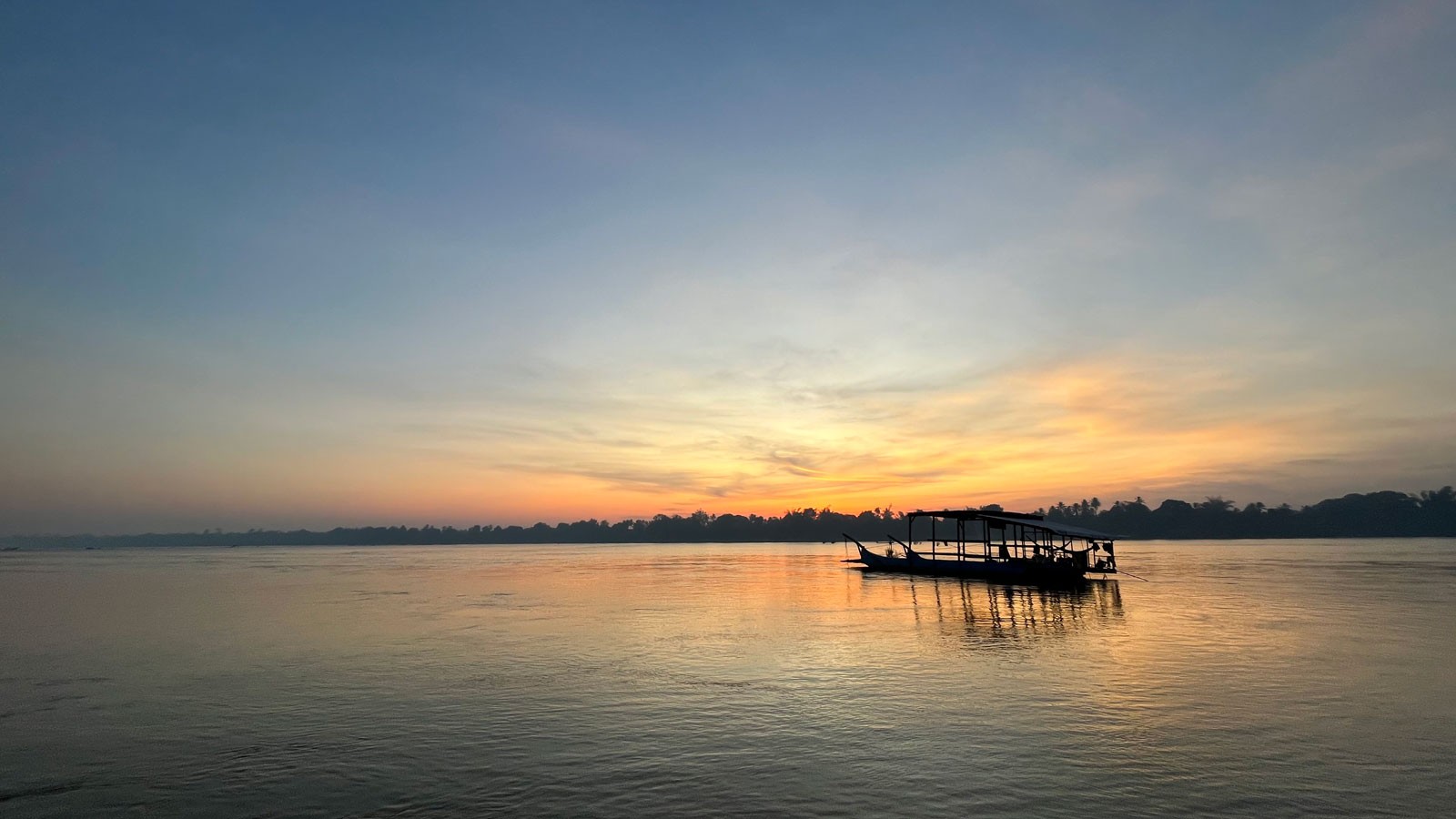Dams at Fault for Fish Disappearing from Mekong River, Research Shows
A boat floats the Sekong River, a major tributary of the Lower Mekong River. (Photo Credit: Kimsan Chann)
New research reveals an alarming decline in the number of fish species in the critical Mekong River system, a change connected to dam development on the world’s most productive river system.
Two tributaries of the river in Southeast Asia showed declines of the number of fish species, while an increase in diversity was noted in a third, largely free-flowing tributary.
“This is one of the first studies to show reduced fish diversity following dam construction, contrasted with increased diversity in less fragmented rivers in the Mekong River system,” said Sarah Null, water resources expert in the Utah State University Department of Watershed Sciences, and an author on the study.
The findings are especially important because the Mekong River, which runs through six Asian countries, supports the highest levels of fish harvest from any inland fishery in the world, sustaining the livelihoods of tens of millions of people. The region’s rapid pace of hydropower development, which includes 129 commissioned dams in the Lower Mekong Basin, threatens this remarkable productivity.
While a source of renewable energy, the dams disrupt and block fish migrations and alter fish communities and aquatic ecosystems, leading to decreased biodiversity, abundance and biomass, according to the authors.
The team focused on the Sesan, Srepok and Sekong — known as the “3S Rivers” — that join the Mekong in Cambodia. While making up just 10 percent of the Mekong watershed geographically, these major tributaries provide as much as 25 percent of the main river’s flow and support 40 percent of the more of than 1,000 species of fish found in the Mekong River system.
The diversity of select fish species decreased alarmingly in the more heavily dammed Sesan and Srepok Basins, the study found, from 60 and 29 species in 2007 to 42 and 25 species in 2014. During the same period, it increased from 33 to 56 species in the Sekong, the basin with the fewest dams.
The results show the importance of keeping rivers like the Sekong free-flowing, said Ratha Sor, researcher at Utah State University and Chea Sim University of Kamchaymear in Cambodia, and lead author of the study.
“The Sekong Basin plays an important role as a free-flowing river corridor for fish migration and can potentially compensate for environmental changes and habitat loss in the Sesan and Srepok Basins,” said Sor, who, like Null, is affiliated with the USAID-supported Wonders of the Mekong project.
The research has taken on added significance as construction continues on a hydropower project on the Sekong River in Laos near the Cambodian border. The project has been criticized by conservationists for its lack of transparency and the potential for extensive environmental damage. A dam would provide a tiny fraction of the region’s power supply while it would disconnect more than 90 percent of the Sekong from the Mekong.
“For a dam that’s not going to create much power, you could ask if this is the best use of the river,” Null said. “I would say it’s not.”
To preserve biodiversity and stem the potential decline in fish species, the researchers urge policymakers to focus on developing other renewable sources of energy and optimizing hydropower of existing dams as alternatives to the construction of new dams in the Mekong region.
This ongoing research by Null and Sor illustrates the global reach of Utah State University scientists and their role in natural resources conservation.
CONTACT
Sarah Null
Associate Professor
Department of Watershed Sciences
435-797-1338
sarah.null@usu.edu
TOPICS
Environment 263stories Water 260stories Ecosystems 129stories Energy 102stories Rivers 101storiesComments and questions regarding this article may be directed to the contact person listed on this page.







